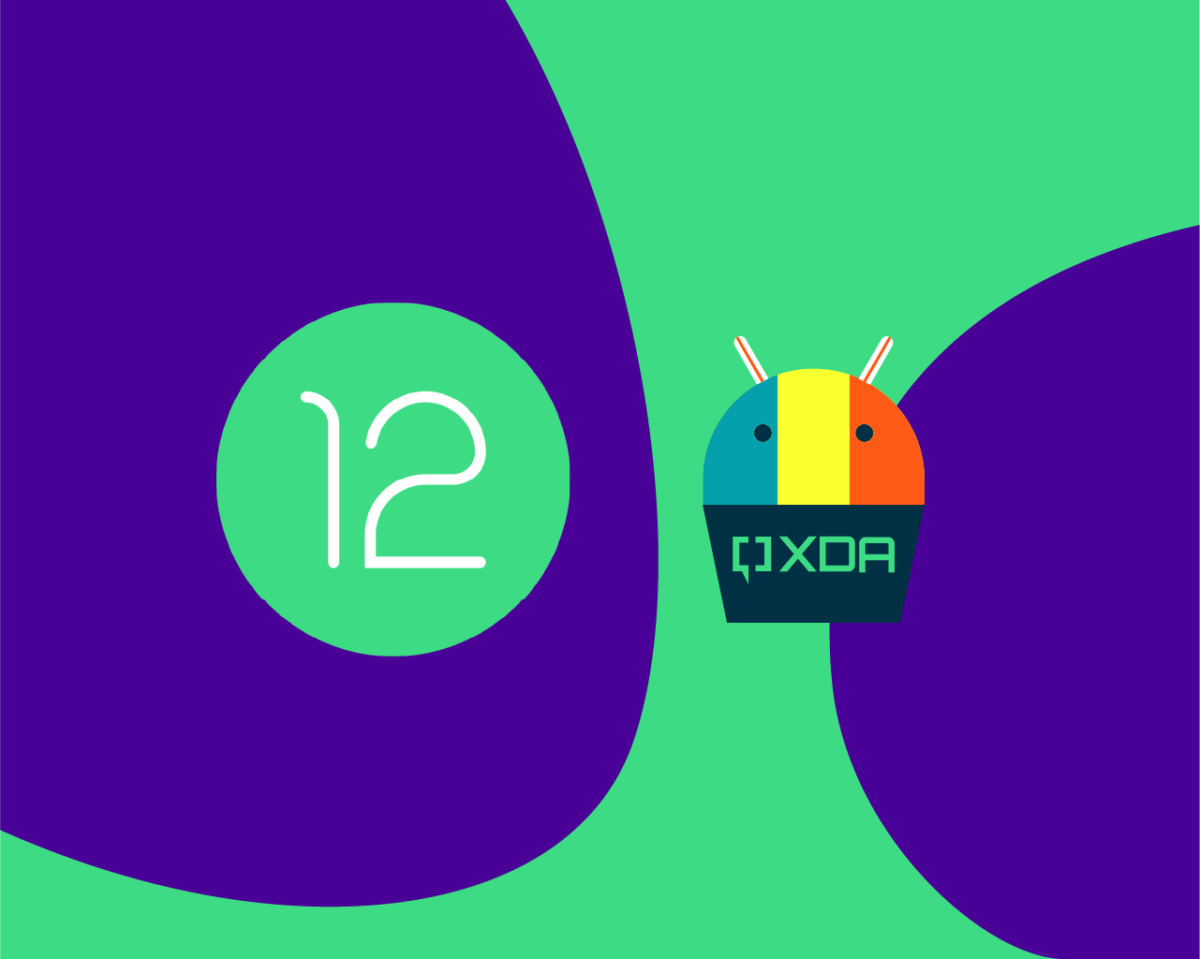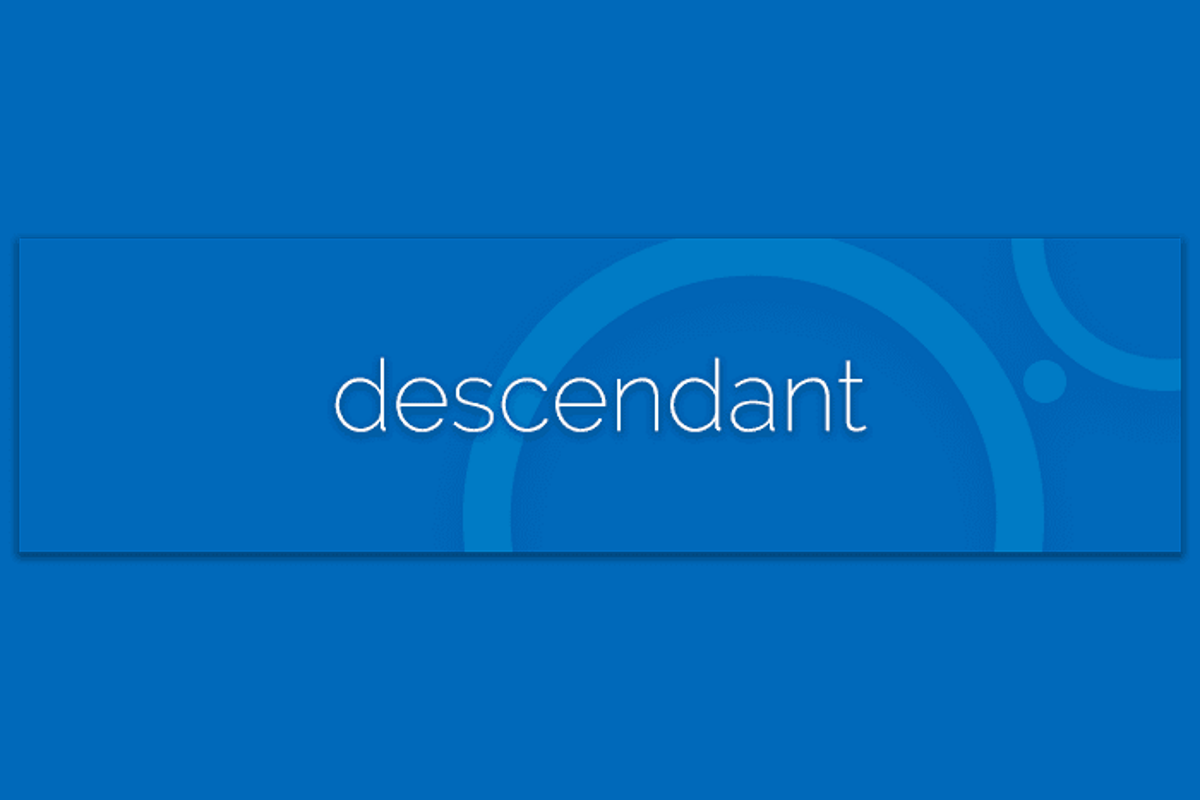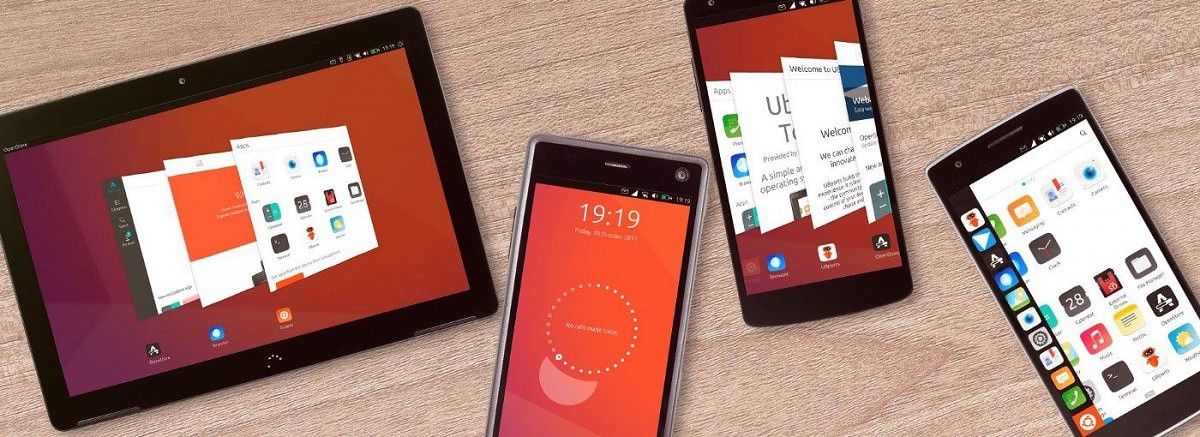latest

DSU Loader to get significant performance improvements in Android 13
DSU will be getting several new features and improvements in Android 13, including a big performance boost.
Dynamic System Update (DSU) is one of the least known features in Android, allowing users to install a Generic System Image (GSI) without unlocking the bootloader or flashing a system update. The feature was first introduced in Android 10 and is one of the easiest ways for developers to test the latest Android versions. And it's getting even better in Android 13.

Custom AOSP GSI brings Android 12L to any Project Treble-enabled device
An Android 12L custom GSI is now available for download, bringing the latest Android OS version to any device that supports Project Treble.
After months of thorough beta-testing, Android 12L is now officially available as an interim update before Android 13. The stable release is currently rolling out to select Google Pixel smartphones, while tablets and foldables from Microsoft, Lenovo, and Samsung will get it later this year. The underlying codebase has also become available through the Android Open Source Project, providing OEMs and developers with the finalized Android 12L source code to play around and compile. This also means that custom ROMs are now due to come at any given time, and indeed, they have already started appearing. The first Android 12L-based aftermarket ROM is now available in the form of a custom Generic System Image (GSI).

DSU Sideloader lets you easily boot any custom GSI via Android DSU Loader
DSU Sideloader is an open source app that greatly simplifies the custom GSI installation process of the Android DSU Loader. Check it out!
Last week, Google released the first Developer Preview build of Android 13. While the current release is only available for a handful of Google Pixel smartphones, the company will likely publish official Generic System Images (GSIs) for the subsequent builds. Apart from manually flashing the GSI, developers can then utilize the Dynamic System Updates (DSU) loader feature to try out the new iteration of Android without wiping out the underlying system partition of the test device.

Phh’s custom Android 12 GSI gets updated with February 2022 security patches, OTA update support, and more
The custom AOSP GSI by XDA Recognized Developer phhusson for use on Project Treble-enabled devices now features a dedicated OTA updater. Read on!
Android 12 has been here a while now. Although some OEMs got the update out the door straight away, others have taken their time to roll out the stable build. Besides the official updates, the aftermarket development community has also helped us experience all the new features of the latest iteration of Android through custom ROMs across a growing list of devices. Unless you’ve been living under a rock, you should also have heard about the Android 12-based custom Generic System Image (GSI) release from XDA Recognized Developer phhusson that can be installed on any device that supports Project Treble. The developer has now refreshed his Phh-Treble AOSP 12 GSI project (code-name "Squeak") with the February 2022 security patches, a number of platform-specific patches, and more.

Android 12 custom GSIs bring the latest Android OS to any Project Treble-supported device
You can now get a taste of Android 12 on any Project Treble compatible device, thanks to these custom GSI releases. Read on to know more!
Android 12 is here, albeit the stable version is available only on Google's Pixel lineup — including the newly introduced Pixel 6 series — for now. A handful of OEMs like Samsung and OnePlus are also offering public beta builds of their customized skins based on the stable Android 12 codebase, but the list of eligible devices is quite small. Nonetheless, the aftermarket development community is helping us experience all the new features of Android 12 through custom ROMs across a growing list of devices. Besides, Google does offer its own set of Android 12 Generic System Image (GSI) packages on its website, so that developers can test their apps against the latest API level.

The first Android 12 custom ROMs are already here
The first set of custom ROMs based on Android 12 is now available in the form of a GSI and a device-specific AOSP build. Read on!
With Android 12's AOSP source drop yesterday, many were left wondering (particularly those with Pixel devices) when they would get to use a fully complete version of the latest and greatest Android experience. We've already seen a number of beta builds from OEMs like OPPO, OnePlus, and Samsung for select devices, but there are no stable releases yet and there likely won't be for a while. Having said that, the public availability of the Android 12 source code means that custom ROMs are now due to come at any time, and indeed, they have already started appearing on our forums.

Breaking: Android 12 Beta GSI goes live ahead of Google I/O 2021
The Android 12 Beta 1 GSI packages are already available for download from Google's server. Go grab then now!
The first Android 12 Developer Preview was released back in February, followed by Preview 2, and recently, Preview 3. Google is supposed to release the Android 12 Beta 1 today to the Pixel lineup during Google I/O 2021. However, it looks like the official Android 12 Beta 1 Generic System Image (GSI) packages are already available for download!

Descendant XI offers a fresh take on Android 11 with loads of unique features
The March 2021 release of Descendant XI is now rolling out, bringing several new features on top of Android 11 and support for more devices.
At XDA, we pride ourselves on the power of the modding community in providing choices — choices that accommodate the wide variety of needs from different users. One of the common products of this choice is the availability of AOSP-based custom ROMs for devices that run on an otherwise heavily customized UI. In fact, many older Android smartphones are kept alive by custom ROMs, sometimes years after devices were abandoned by the device maker.

An early build of LineageOS 18.0 GSI brings Android 11 to Project Treble compatible devices
You can now get the taste of LineageOS 18.0, based on Android 11, on any Project Treble compatible device thanks to this custom GSI release.
Android 11 is the latest Android version out there, albeit it is available officially on only a handful of devices. But since the source code of the new release has already made its way to AOSP, aftermarket developers have helped us experience all the new features on Android through custom ROMs across a growing list of devices. Unless you've been living under a rock, you should also have heard about the Android 11-based custom Generic System Image (GSI) created by XDA Recognized Developer phhusson that can be installed on any device that supports Project Treble. We now have a new addition to the list, as the first alpha build of LineageOS 18.0 GSI is up for grabs.

The Android Generic project aims to bring popular custom ROMs to your PC
The Android Generic project from the developers of BlissRoms makes it extremely easy to port any custom ROM to your x86(-64) PC. Read on!
Apart from smartphones and tablets, Android is an operating system you can find inside your smart TV, smartwatch, car, and several other devices of all shapes and sizes. When it comes to the world of x86 PCs, however, Google is trying hard to push Chrome OS instead. Thankfully, Android’s open-source nature and versatility allow developers to unleash the full potential of the OS and port it to x86(-64) devices as well. The Android-x86 project is a pioneer in this field, which also serves as the foundation for a number of forks, such as Remix OS (not supported anymore) and Bliss OS. The developer team behind the Bliss OS/BlissRoms project has now come up with an interesting toolkit that should revolutionize the porting process of any custom ROM to the PC platform.

Descendant X custom ROM for the Xiaomi Mi A1 and Mi 9 adds "Guardia," a background permission monitor
Descendant X custom ROM by XDA Senior Member Dil3mm4 adds a nifty background permission monitor called Guardia. Read on to know more!
The open, no-walled-garden design of Android gives users the freedom of customization. Thanks to the vibrant aftermarket development community, Android users can enjoy plenty of features that are otherwise not implemented by Google or OEMs. Take the example of Android's new advanced permission management control system called Permissions Hub— something that was present in early leaked Android Q builds but Google didn't ship in public releases. The relevant code snippets do still exist in AOSP, which have later been forked by the LineageOS team, and now it is accessible to regular users via LineageOS 17.1. XDA Senior Member Dil3mm4 has now taken another shot at enhancing the permission mechanism in their own way. Dubbed "Guardia", the new background permission monitor is part of the latest build of their custom ROM, Descendant X.

How to enable VoLTE on Qualcomm devices running Generic System Images (GSIs)
The VoLTE-Fix mod can be used to bring back support for Voice over LTE on most Project Treble-compliant Qualcomm devices running Generic System Images.
Google's Project Treble is undoubtedly the biggest restructuring of the Android OS since its inception. The Mountain View giant completely revamped the way the Android OS framework and vendor drivers/the Linux kernel interact with one another in order to reduce Android platform version fragmentation. On top of that, Project Treble also made it possible to boot an AOSP Generic System Image (GSI) on any supported device. XDA's developer community has long been distributing its own custom GSIs with additional device-specific fixes, but there are some known limitations in those builds. For example, advanced cellular services like Voice over LTE (VoLTE) and Wi-Fi Calling (VoWiFi) are usually broken on GSIs.

How to install custom ROMs or GSIs on Samsung Galaxy devices without TWRP
XDA Junior Member kkoo has demonstrated an innovative way to flash custom ROMs and GSIs on Samsung Galaxy devices without using TWRP. Read on to know more!
Samsung ships its "Galaxy" branded smartphones and tablets highly modified Android software builds, the latest generation of which is known as One UI. Besides all the UI/UX related differences from stock Android, there is one specific feature that makes Samsung's Android devices very unique compared to devices from other manufacturers. The Korean OEM substitutes the regular Fastboot mechanism with its own protocol in their products. Internally named after characters from the Norse Mythology, the piece of code running on the device is known as "Loke", while the remote-side (usually a PC) component is called "Odin".

UBports GSI brings Ubuntu Touch to any Project Treble-supported Android device
XDA Recognized Developer erfanoabdi has compiled an Ubuntu Touch GSI that can be installed on any Project Treble compliant device.
The ability to boot an AOSP Generic System Image (GSI) on a compatible Android device is one of the best outcomes of Project Treble, but a similar achievement has yet to be made in the domain of generic kernel development. Google does mandate a minimum Linux kernel version requirement with each new release of Android, but you still can't simply flash a generic ARM Linux distribution on your Android smartphone and expect it to work due to the fact that the majority of the Android devices are not using a mainline Linux kernel. There exists a community-driven project named UBports that aims to bring Ubuntu Touch (a mobile version of the popular Ubuntu Linux distribution) to Android devices, but their device support is fairly minimal to date.

phh's custom Android 10 GSI adds better support for the Razer Phone and new "My Device" settings
The custom AOSP GSI by XDA Recognized Developer phhusson for use on Project Treble-enabled devices now features a dedicated "My device" settings. Read on!
Google first announced Project Treble with Android 8.0 Oreo in an effort to bring faster updates to Android devices and minimize the long-standing issue of fragmentation. XDA's developer community quickly discovered another interesting benefit with this modularization approach: the ability to boot an AOSP Generic System Image (GSI) on any supported device with an unlockable bootloader. After making history by successfully booting AOSP GSI on the Huawei Mate 9, XDA Recognized Developer phhusson has become a lead mentor in the field of community-made custom GSIs. The developer has now updated his vanilla Android 10 based Project Treble GSI AKA Quack Phh-Treble with a new option that greatly simplifies the setup process of various device-specific Treble app presets.

Custom AOSP Project Treble GSI gets updated with June 2020 security patches, Netflix HD support for the Xiaomi Mi 9 and Redmi Note 9S, and more
XDA Recognized Developer phhusson's custom AOSP GSI for Project Treble-compliant devices has been updated with June 2020 security patches.
Thanks to Project Treble, Android users can easily boot an AOSP Generic System Image (GSI) onto any supported device. Be it Xiaomi's MIUI or Samsung's One UI, those heavily customized OEM skins can even be replaced with community developed GSIs in favor of a close-to-stock Android experience. While you should be able to boot Google's AOSP GSI onto any Project Treble-supported device, you'll be missing out on many features that lend to a proper day-to-day experience. That's where XDA Recognized Developer phhusson's custom GSI comes in. He incorporates many bug fixes and feature additions that aren't available in Google's GSI in order to make them actually usable on a day-to-day basis. The developer has now refreshed his custom Project Treble GSI project with the latest June 2020 security patches and a number of new device-specific patches.

Custom Project Treble GSIs get updated with the May 2020 security patches and add DC Dimming support on OPPO devices
The custom AOSP GSI by XDA Recognized Developer phhusson for use on Project Treble-enabled devices has been updated with May 2020 security patches.
A bunch of Samsung devices started receiving the May 2020 security patches even before Google published the security bulletin for the month and rolled out corresponding OTA updates for the compatible Pixel devices. Even if you don't have a Google Pixel phone or one of those Samsung flagships, you still have a chance to bump the Android security patch level (SPL) of your device by flashing an updated Generic System Image (GSI), provided the device itself is compliant with Project Treble and the bootloader is unlockable. In fact, XDA Recognized Developer phhusson, a well-known name in the third-party GSI development community, has recently updated his custom AOSP-based Project Treble GSI AKA Quack Phh-Treble with May 2020 security patches as well as several OEM-specific fixes.

Custom Project Treble GSIs get updated with the April 2020 security patches and fixes for Xiaomi/Realme devices
The custom AOSP GSI by XDA Recognized Developer phhusson for use on Project Treble-enabled devices has been updated with April 2020 security patch. Read on!
As a consequence of separating the Android OS framework and the vendor HALs and Linux kernel, Project Treble enables the ability to boot an AOSP Generic System Image (GSI) on any supported device. While Google does provide developer-centric Android 10 GSIs as well as a handy flash tool on its website, community developers have long been distributing their own custom GSIs based on popular custom ROMs or just plain AOSP. These distributions often incorporate device-specific fixes so that end users can easily substitute the heavily customized Android skin on their phones with an almost stock experience without breaking basic functionalities like Wi-Fi or RIL. The pioneer in this field, XDA Recognized Developer phhusson, has now updated his custom Project Treble GSI with the latest April 2020 security patches as well as a whole lot of other fixes.

Google's Android Flash Tool makes flashing AOSP builds much easier
Looking to flash an up-to-date Android build from source? Google's new Android Flash Tool simplifies the process of flashing AOSP GSIs.
When Google released Android 8 Oreo, they introduced a major under-the-hood change to the way the Android OS framework and vendor drivers/the Linux kernel interact with one another. This project was given the name Project Treble, and it has made it possible for Android smartphones to boot a vanilla version of Android, called a Generic System Image (GSI), without requiring many modifications to the boot or vendor images. Google releases a freshly updated GSI every month to coincide with the latest Android security patch level, but they also continuously build new GSIs from the AOSP source tree. Until now, flashing one of these builds required knowledge of fastboot commands, but Google is making it easier than ever to flash these AOSP builds with the Android Flash Tool.

Unofficial LineageOS 17 GSI released for Project Treble compatible devices
You can now get LineageOS 17, based on Android 10, on any Project Treble compatible device thanks to this unofficial LineageOS 17 GSI release.
As part of Android 8.0 Oreo, Google released a major rearchitecting of the Android OS called Project Treble. The change aimed to help make OS updates easier, faster and less costly for device manufacturers. On top of that, Project Treble also made it possible to boot a generic, AOSP-based system image without modifying the boot or vendor image. Manufacturers seeking Google certification are required to test their devices for Treble compliance by booting this Generic System Image (GSI) and verify basic hardware functionality. However, they're not required to make sure that everything works on the GSI. This resulted in GSIs being fairly functional on some devices and completely broken on others. To overcome this issue, developers released custom GSIs that are designed to work on as many devices as possible and with few bugs. Late last month, XDA Recognized Developer phhusson released an Android 10 based GSI that can be installed on any device that supports Project Treble. And now, XDA Recognized Contributor AndyYan has released an unofficial LineageOS 17 GSI.




